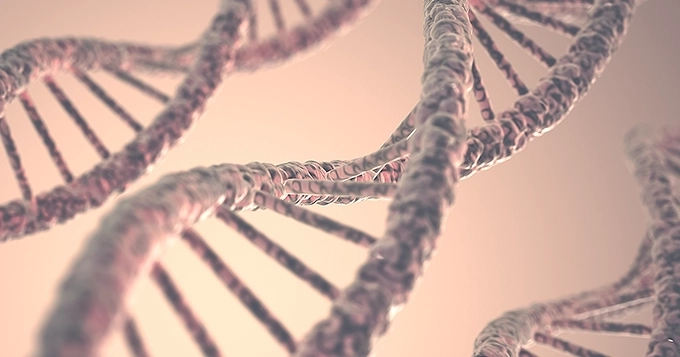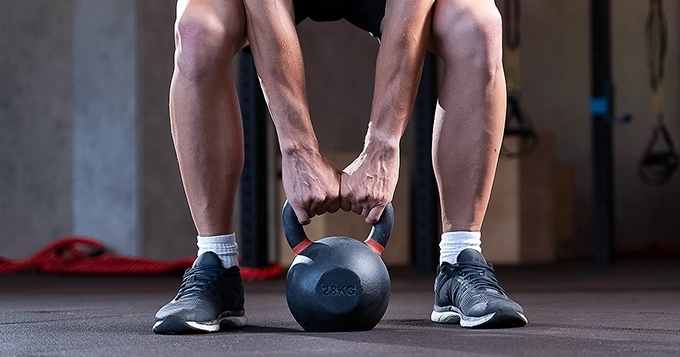
Key Takeaways
- Get enough protein, calories, healthy fats, and stay hydrated to support muscle growth.
- Gradually lift more weight or do more reps to push your muscles to grow.
- Train regularly, at least twice a week, to see steady muscle growth.
- Rest and recovery allow muscles to repair and grow stronger.
- Your genes and hormones affect how easily you build muscle.
Many fitness enthusiasts strive for muscle mass growth, but it’s not just about hitting the weights. There isn’t a universal method for building muscle because it varies based on individual factors.
The stages of muscle growth encompass various physiological processes, including muscle fiber hypertrophy and increased protein synthesis, ultimately leading to enhanced muscle size and strength.
Understanding the essential factors that influence muscle growth can help you maximize your efforts and achieve your desired gains. Let’s examine the vital components of this process.
Proper Nutrition

Nutrition is essential for fueling the stages of muscle growth.
Adequate protein intake is important to promote muscle repair and growth. Additionally, you may need to consume more calories than you expend to create an energy surplus, which means consuming more calories than your body burns. Carbohydrates and fats are also essential to fuel your workouts and support recovery.
Common Dietary Errors That Might Hinder Muscle Growth:
Gaining muscle often involves overcoming challenges that can impede progress. According to experts, here are some of the most common mistakes that can slow down muscle growth and how to correct them.
- Inadequate Protein Intake
It is crucial to ensure adequate protein intake from diverse sources such as lean meats, dairy, and seafood. Aim for 1.6 to 2.2 grams of protein per kilogram of body weight daily, distributed evenly across meals, to optimize muscle protein synthesis. - Low Caloric Intake
Muscles require a calorie surplus to grow. If you’re in a caloric deficit, muscle growth is hindered. Track your calorie intake, and consider consulting with a registered dietitian if needed, to ensure you’re consuming more calories than you burn. - Insufficient Carbohydrate Consumption
Carbs fuel high-intensity workouts, and inadequate intake can impair performance and recovery. To meet carb needs, include whole grains like quinoa and brown rice in your diet, aiming for 3 to 7 grams per kilogram of body weight daily for regular to intense training. - Dehydration
Hydration is crucial for muscle function and repair. Consume water consistently throughout the day, with a general guideline of 11.5 cups for women and 15.5 cups for men daily, adjusted based on activity level. - Overlooking Healthy Fats
Healthy fats, found in avocados, nuts, and fatty fish, are essential for hormone production and support of muscle growth. Prioritize whole foods over supplements to avoid nutrient deficiencies and gastrointestinal issues. - Post-Workout Nutrition Neglect
After exercise, the body requires nutrients for muscle repair and growth. Consume a balanced meal of proteins and carbohydrates post-workout or pack a portable snack to refuel if unable to eat immediately after exercising.
Progressive Overload

Progressive overload involves gradually increasing the demands on muscles over time to stimulate adaptation, leading to muscle growth and enhanced strength. This principle applies not only to resistance training but also to cardiovascular exercise.
According to research published in the Timişoara Physical Education and Rehabilitation Journal, progressive overload systematically helps athletes improve their work capacity, strength, and conditioning. Athletes are pushed beyond their comfort zones by progressively increasing training intensity, prompting measurable results. The body requires this challenge to undergo meaningful changes.
Consistent Training
Consistency is vital in strength training, often overlooked but essential for program success. Researchers examined numerous studies involving thousands of individuals and concluded that adhering to a weightlifting regimen is key. The exact weight lifted, specific program or workout frequency matters less than maintaining consistency, ideally training at least twice weekly.
A study reviewed in the British Journal of Sports Medicine compared various resistance training methods, considering factors like the weight used (heavy versus light), the number of sets (single versus multiple), and workout frequency. This comprehensive analysis included both men and women. The key takeaway from this study is that resistance training, regardless of the specifics, offers superior benefits compared to not exercising at all.
The research found that lifting heavier weights, approximately 80% of one’s one-rep max, is particularly beneficial for increasing strength. However, when it comes to muscle growth, different approaches—whether using lighter weights with more sets or heavier weights with fewer sets—produced similar results.
The study suggests that for optimal muscle hypertrophy, employing multiple sets with heavier weights and maintaining a training frequency of at least twice a week is most effective.
In essence, consistent training is crucial for developing muscle size. While using lighter weights for more repetitions (typically 20 to 30 or more) can still enhance strength, heavier resistance training tends to offer a greater advantage in terms of muscle growth.
Adequate Rest and Recovery

Rest days are crucial for recovery and mental rejuvenation. They prevent burnout, maintain motivation, and ensure you’re fully prepared to give your best effort in your next session. Additionally, rest allows your body to adapt to training and become stronger and fitter, ultimately enhancing your performance in subsequent workouts. Skipping the recovery period can hinder progress, making rest days essential for optimizing training effectiveness.
5 Reasons to Prioritize Rest Days:
Gaining muscle often involves overcoming challenges that can impede progress. According to experts, here are some of the most common mistakes that can slow down muscle growth and how to correct them.
- Strength Development: Rest is essential for muscle repair and growth. During rest periods, muscles heal and strengthen, allowing you to perform future workouts more efficiently.
- Injury Prevention: Skipping rest days increases the risk of injury due to fatigue-induced poor form and overuse. Adequate rest reduces the likelihood of overuse injuries, ensuring sustained training.
- Fitness Progress: Overtraining can hinder fitness progress and lead to burnout. Rest days prevent burnout by allowing your body to recover, maintaining motivation, and preventing setbacks.
- Enhanced Performance: Rest days rejuvenate both body and mind, reducing muscle soreness and fatigue. This rejuvenation enables you to push harder in subsequent workouts, maximizing results.
- Habit Formation: Incorporating rest days into your routine fosters long-term adherence to exercise habits. Flexibility in scheduling promotes sustainability, allowing for adjustments without compromising training consistency.
Genetics

Genetics significantly impact muscle growth potential. Factors like muscle fiber composition, protein synthesis rates, and hormone levels are genetically determined. Some individuals may have more fast-twitch muscle fibers, providing an advantage in strength activities. Additionally, genetic variations affect how muscles respond to training and nutrition.
Hormonal Imbalance
Hormonal imbalances can impact muscle growth. Hormones like growth hormone, testosterone, and insulin-like growth factor-1 play crucial roles in muscle development by promoting protein synthesis and muscle repair. Muscle growth can be hindered when these hormones are imbalanced due to medical conditions, aging, or lifestyle factors, such as poor diet and stress.
For example, low testosterone levels may lead to reduced muscle mass and strength, while excess cortisol, the stress hormone, can impair muscle protein synthesis and promote muscle breakdown. Balancing hormones through proper nutrition, exercise, stress management, and medical interventions when necessary can help optimize muscle growth and overall health.
How to Maximize Muscle Growth?

Are you looking to maximize your muscle growth? Maximizing muscle growth involves a combination of science-backed strategies and dedication to your fitness routine. Let’s explore some proven methods to help you achieve optimal results.
- Practice Progressive Overload: This is the foundation of building muscle. You can continuously push your muscles by progressively increasing your exercises’ weight, sets, or reps. Your muscles have to constantly adjust to this process to become stronger over time.
- Do Compound Exercises: Compound workouts are very efficient for building muscle because they work several muscle groups simultaneously. To encourage optimal muscle activation and growth, include movements like bench presses, squats, deadlifts, and rows in your routines.
- Ensure Adequate Protein Intake: Protein is essential for muscle repair and growth. Aim to consume a source of protein with each meal, and consider adding a protein shake or snack post-workout to support muscle recovery. For optimal muscle growth, aim for around 1.6 to 2.2 grams of protein per kilogram of body weight per day.
- Eat Nutrient-Dense Foods: Besides protein, your body needs various nutrients to support muscle growth. Focus on consuming nutrient-dense foods like lean meats, fish, eggs, dairy products, fruits, vegetables, whole grains, and healthy fats. These foods provide the vitamins, minerals, and antioxidants necessary for optimal muscle function and recovery.
- Stay Hydrated: Being properly hydrated is crucial for optimal muscle function and growth. Drink enough water throughout the day, especially before, during, and after workouts. Dehydration can impair muscle performance and recovery, so prioritize staying hydrated to maximize muscle growth.
- Get Sufficient Rest and Recovery: Muscles grow and repair during rest periods, so prioritizing recovery is essential. Aim for 7-9 hours (hrs) of quality sleep each night to support muscle recovery and growth. Include rest days in your training regimen to give your muscles enough time to heal.
- Manage Stress Levels: High stress levels can increase cortisol levels and impair muscle growth and recovery. Practice stress-relieving techniques such as deep breathing exercises, meditation, yoga, or spending time in nature to help manage stress and promote optimal muscle growth.
- Be Consistent: Consistency is key to maximizing muscle growth. Stick to a regular workout routine, prioritize proper nutrition, and ensure adequate rest and recovery. Results won’t happen overnight, but with dedication and consistency, you’ll see progress over time.
Following a well-designed muscle gain program can help individuals effectively increase their muscle mass and strength over time through structured workouts and proper nutrition.
How Long Does it Take to See Muscle Growth?

Understanding the different muscle growth stages is essential for developing an effective training program tailored to individual fitness goals and needs.
When lifting weights, your muscles undergo stress, leading to potential growth within one to seven days. During the initial muscle growth stages, individuals may experience significant strength gains before noticing visible changes in muscle size. To maintain progress, regularly rotating muscle groups during your workouts is essential.
In the initial weeks of weightlifting, strength gains are mainly due to your nervous system becoming more efficient at activating muscle fibers. Over time and with consistent training, muscle growth becomes the predominant source of strength improvement.
While more seasoned lifters could observe changes in as little as three to four weeks, beginners usually notice noticeable muscle gain by eight weeks. A healthy diet and strength training regimen can help most people grow one to two pounds of lean muscle each month.





